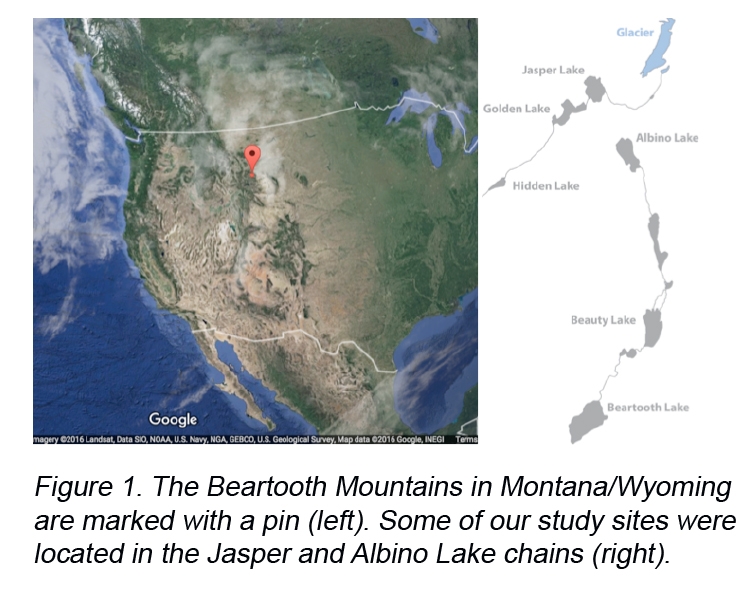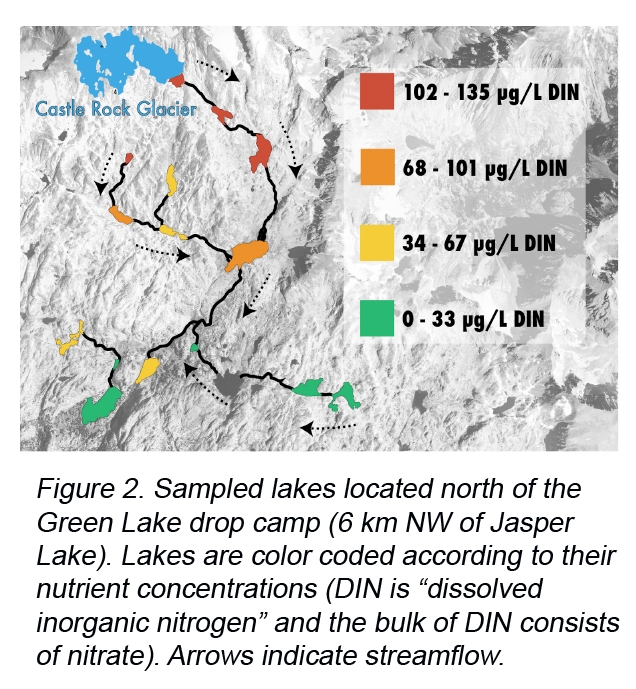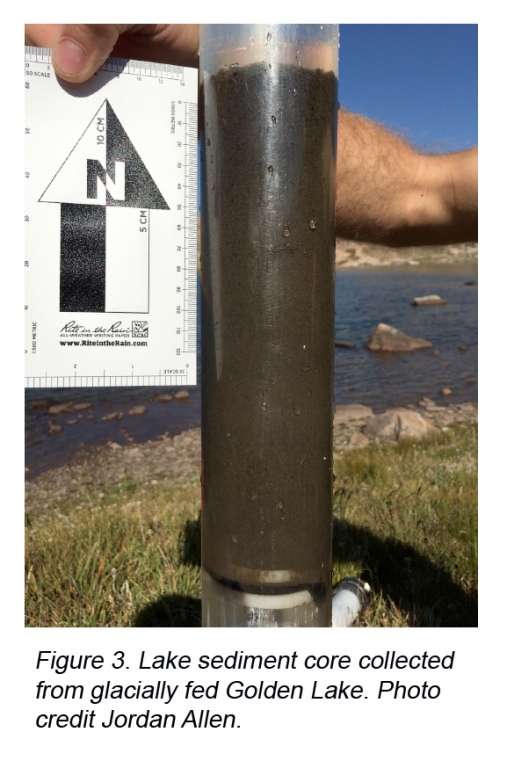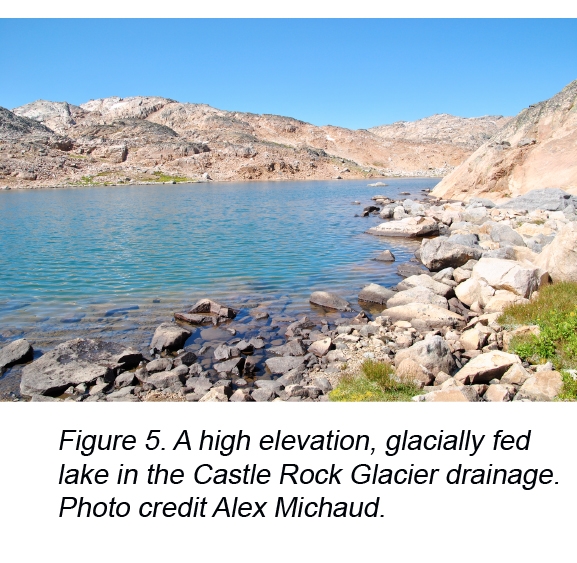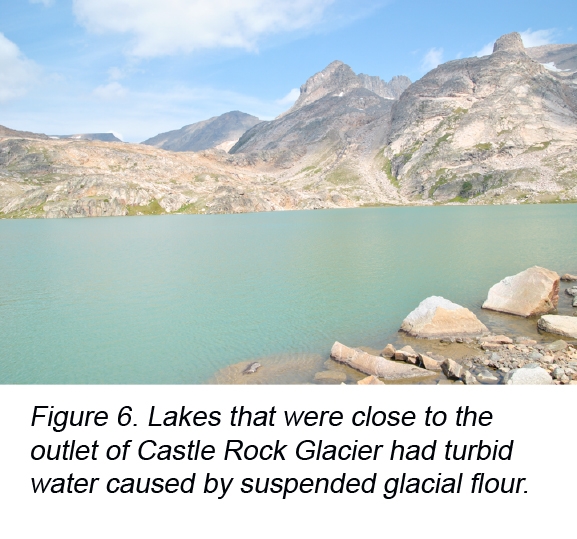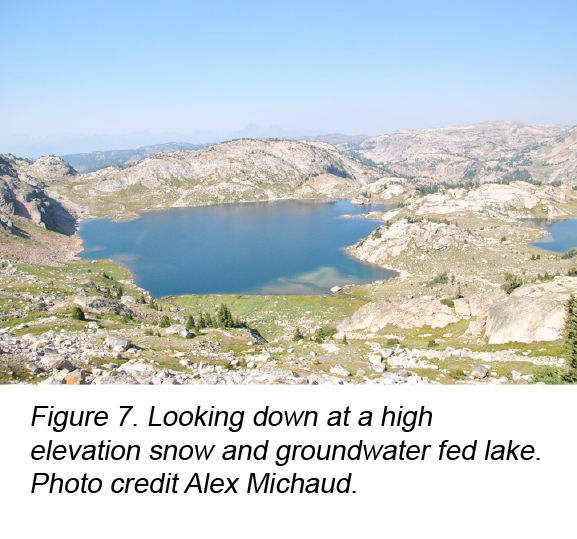Characterizing nutrients and algal communities of glacially fed lakes across the alpine landscape of the Beartooth Mountains
Characterizing nutrients and algal communities of glacially fed lakes across the alpine landscape of the Beartooth Mountains
Expedition to the Rocky Mountains of Montana and Wyoming
August 10th – 25th, 2015
Field Team: Ben Burpee, Dr. Mark Skidmore, Jordan Allen, and Alex Michaud
Rates of warming in alpine regions are two times faster than the average rate of the northern hemisphere. This rapid warming has driven increased glacier meltwater delivery to alpine lakes and streams over the past 70 years (Granshaw and Fountain 2006). In the North American Rocky Mountains, glacial meltwater contains high concentrations of nitrate. This is particularly true for glacier meltwater in the Beartooth Mountain range, which has the highest recorded concentrations in North America (Saros et al 2010). Nitrate (NO3–) is a highly bioavailable form of nitrogen, important for the reproduction, function, and growth of aquatic organisms. The high concentrations of nitrate that are delivered into lakes via glacier meltwater have ecological effects including increased productivity of photosynthetic algae and decreased biodiversity of phytoplankton communities (Slemmons and Saros 2012).
In August of 2015, I conducted an expedition to the Beartooth Mountains on the Montana/Wyoming border. The purpose of this expedition was to conduct a lake sampling survey to understand how widespread glacial nitrate enrichment of lakes is across the alpine landscape, and to identify potential research lakes for future studies.
I travelled to Bozeman, MT on August 10. The following day, I met with Professor Mark Skidmore and Jordan Allen, a graduate student, at Montana State University to organize gear and finalize field plans. Jordan and I then travelled to the Beartooth Mountains and setup camp at Jasper Lake, the headwater lake of a glacially fed lake chain (Figure 1). We spent the next four days sampling lakes at this location. On August 15, Jordan and I hiked 6 km northwest to meet Mark and another MSU graduate student volunteer, Alex Michaud at Green Lake. Gear was brought in with pack horses, and we setup a drop camp along the Green Lake shore. With the help of Jordan and Alex, I sampled 10 glacially fed lakes (located in the Castle Rock Glacier drainage) and 5 snow and groundwater fed lakes (Figure 2). Water and surface sediment samples were collected to quantify nutrient chemistry and algal communities, respectively. A lake sediment core (Figure 3) was also collected from glacially fed Golden Lake to characterize ecological and environmental change since the mid-19th century, which captures a period of rapid warming in this area. We returned to Bozeman on the 23rd, and I returned to the University of Maine with my samples on the 25th.
Acknowledgements:
This field work was sponsored by the Gokcen Fund and an A2C2 IGERT fellowship (NSF-DGE1144423). I would like to thank my advisor, Dr. Jasmine Saros, for project planning and Dr. Mark Skidmore, Alex Michaud, and Jordan Allen for field assistance.
References:
Granshaw F D and Fountain A G. 2006. Glacier change (1958–1998) in the north Cascades national park complex, Washington, USA. Journal of Glaciology, 52.177: 251-256.
Saros J E, Rose K C, Clow D W, Stephens V C, Nurse A B, Arnett H A, Stone J R, Williamson C E, and Wolfe A P. 2010. Melting alpine glaciers enrich high-elevation lakes with reactive nitrogen. Environmental Science and Technology, 44.13: 4891-4896.
Slemmons K E H and Saros J E. 2012. Implications of nitrogen-rich glacial meltwater for phytoplankton diversity and productivity in alpine lakes. Limnology and Oceanography, 57.6: 1651-1663.


